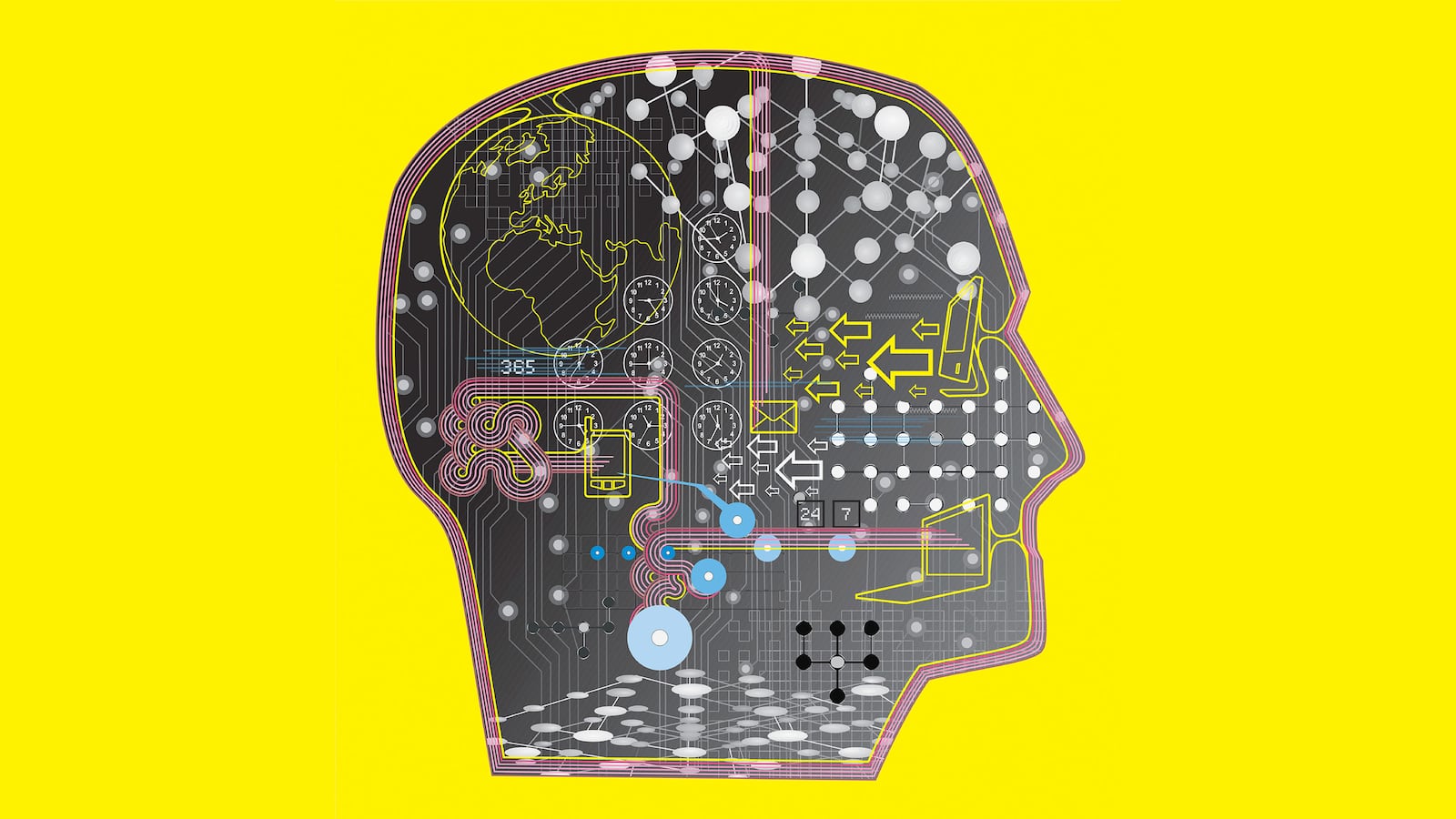Quietly over the past few months, the technology has started falling into place to allow people to communicate without words by transmitting their thoughts to each other via tiny, modem-like devices plugged into their brains.
That’s right. Computer-aided telepathy. And it could become big business in the not-so-distant future.
In April, a team of scientists from the University of Washington and Carnegie Mellon University published in the journal Nature a paper detailing an ambitious experiment they’d recently conducted.
Three people worked together to play a crude version of the video game Tetris. Two of the research subjects could see the whole game screen–the falling blocks, the gaps in the stack of blocks at the bottom of the screen.
Using only their thoughts, they beamed commands to a third person, whose own screen didn’t show the stack that the falling block needed to fit into. Sensing the commands from other two players, the third player rotated the block to fit.
This so-called “BrainNet” is one piece of the telepathy puzzle. Five months later in September, the California medical-device company Synchron announced it had successfully tested, for the first time in a clinical setting, another key piece. A new brain sensor whose implantation, unlike previous models, doesn’t require drilling a hole in the user’s skull.
Synchron’s tiny, flexible “stentrode” travels through the bloodstream to the brain, where it parks itself and begins reading neural activity. The stentrode can wirelessly transmit the data to other devices: “smart” prostheses, drones and modems in the minds of other people.
Combine the university scientists’ brain-to-brain communications network with the non-invasive stentrode and you’ve got the potential for safe, relatively inexpensive brain-to-brain communication. “The base technology is really not as futuristic as many people might think,” Jacob Robinson, a Rice University neuroengineer, told The Daily Beast in reference to the wider field of brain-machine interfaces.
These interfaces are pretty crude in their current form. But they work. It’s perhaps no wonder, then, that companies as big as Facebook have leaped into the market.
Today our smartphones and other tech require an awful lot of typing, tapping, swiping and staring at screens. Tomorrow’s phones might respond to our thoughts. And the phone after that might not be a phone at all. It could be a subscription to a brain-to-brain communication service.
In 2017, Facebook launched its own internal initiative “to build a non-invasive, wearable device that lets people type by simply imagining themselves talking.” The social-media giant also began funneling money to outside researchers, including University of California San Francisco neurosurgeon Eddie Chang.
Facebook’s efforts gathered steam in July, when Chang and his teammates revealed they had succeeded in translating brain activity into text with up to 76 percent accuracy.
To be clear, the BrianNet experiment that university researchers wrote about in April represents the crudest kind of telepathy. The tech is still in its infancy.
In their experiment, two volunteers wore electroencephalogram (EE) electrodes on their heads—the kind neurologists use to detect epilepsy—and watched the Tetris-like game play out on computer screens. All they had to do was decide whether a block should rotate in order to fit.
Then think—really hard—rotate.
The scientists had already mapped out the neural activity that results from the thought rotate. They wired the EEGs to computers that looked for the “rotate” thought and, when they saw it, beamed a signal to the third test subject, who was wearing a transcranial magnetic stimulation (TMS) device like the kind doctors use to treat depression.
Remember, the third subject could not see the full gameplay on their screen. They didn’t know, on their own, whether they needed to rotate the block. They counted on their telepathy partners to give them a nudge.
The nudge came in the form of a flickering light only the third test subject could see. The TMS tickled the subject’s occipital cortex, causing them to see a high-frequency flashing in their vision that they’d been told stood for “rotate.”
They pressed a button. Rotated the block. And, if everything worked, won the game. In 16 trials, the three-person team beat the game 13 times, the scientists reported.
The scientists reported their success in typically dry terms. BrainNet, they wrote, “to our knowledge is the first multi-person non-invasive direct brain-to-brain interface for collaborative problem solving.”
But it’s one thing to beam a single command between three brains with 81 percent accuracy. It’s another to encode and transmit complex thoughts.
The BrainNet team used EEG and TMS tech, both are noninvasive, but imprecise. Surgically implanted interfaces are more accurate, but riskier to the user’s health, what with all the cutting and drilling. Stentrodes such as those Synchron is testing are safer than surgical implants are, but it’s unclear how precise they can be.
”The important question of how much information can be gathered from the brain using the stentrode still needs to be answered,” Bradley Greger, an Arizona State University neuroengineer, told The Daily Beast.
There are ethical questions, too. “Could some future embodiment of a brain-to-brain network enable a sender to have a coercive effect on a receiver, altering the latter’s sense of agency?” Robert Martone wrote in Scientific American. “Could a brain recording from a sender contain information that might someday be extracted and infringe on that person’s privacy? Could these efforts, at some point, compromise an individual’s sense of personhood?”
But all the concerns and caveats shouldn’t diminish the progress scientists and industry have made turning the fantasy of mental telepathy into a real, and potentially commercial, technology.
Telepathy is real. And it could be coming to your own brain sooner than you think.






